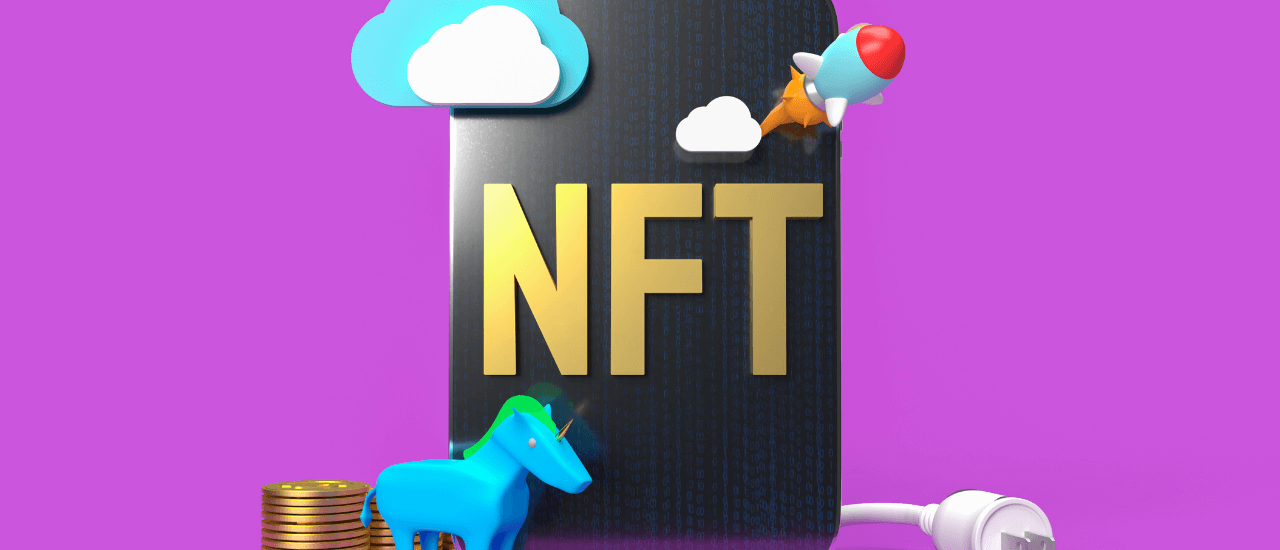
What is an NFT Marketplace?
An NFT Marketplace is a digital platform meant for buying and selling NFTs. Further, these platforms allow users to store, display, and mint NFTs. These platforms function as the public blockchain ecosystem where users have to create accounts, upload, and sell their artworks. Generally, specialized marketplaces are way more popular than conventional ones because the former platforms provide promotional support for the artworks too. Thus, specialized NFT Marketplaces are able to target a specific target audience.
Functionality of NFT Marketplace
To be able to store, sell, buy, or mint NFTs, it is important to follow the steps mentioned below. These steps are considered the basic functionalities of the NFT Marketplace.
• First, the users have to log in by creating an account on the platform. After the successful registration users can download a digital wallet to store NFTs.
• Now, the users can list their assets and specify which payment tokens they wish to receive. Alongside, depending on the platform protocols the fees can also be set.
• After the assets/NFTs are uploaded there, the next step is to initiate the process for NFT selling. Here, buyers get the option of bidding on a fixed price or an auction. After every sale, the transaction is reflected in the user’s wallet.
• The platform then conciliates the produced data before adding NFT to the list.
• NFT Marketplaces deploy smart contracts to control the connection between the buyer and supplier. These contracts comprise NFT –specific data which makes the purchase and sale of tokens more accessible and convenient.
Popular Spots of NFT Marketplace
Oftentimes, we hear NFT being associated with Artworks only but there are several other domains too where NFT Marketplace act benefits. NFTs are utilizing various forms of Digital Arts to generate profit by creating replicas of authentic images to memes. Such as NFT platforms allow users to buy, sell and send GIFs, music, movies, and photographs using the Ethereum platform. It uses ERC1155 and ERX721 protocols for creating NFTs.
Alongside the role of NFTs shift towards swapping virtual worlds also known as Metaverse, collectibles, virtual properties, animated characters, and others into tokens. At times NFTs are also used as the key for a variety of information, databases, programs, events, etc., and help secure them. E-Learning service providers use the NFT model for selling complete courses, keeping track of learners’ performance, and establishing communications.
Essential Features to look in NFT Marketplace App
Some of the significant features to look in the NFT Marketplace platform are as follows:
• Shopfront : It is a dashboard where users get ample information like asset, prices, archives, payment gateway, tile, etc.
• Advanced Search Options: With this feature consumers obtain complete information about the product and ensure client satisfaction. This may also include filtration, promotions, reviews, recommendations, and other such features.
• Trading: Customers should be able to buy and sell NFTs listed on the platform or marketplace which include bid validity date, information, and proposal status.
• NFT Wallet: The wallet allows the transfer and storage of NFT tokens with the integration of the simplest protocols. Few NFT wallets are – Metamask, Coinbase, Wallet Connect, and MyEtherWallet etc.
Building an NFT Marketplace
Developing the NFT Marketplace is the process comprising few essential steps which are mentioned below:
-
Pick a domain
-
Establish User Interface Design
-
Create Token Generator for Smart Contract
-
Focus on Front-end Development
-
Testing for bugs
Final Words
NFT Market is the newest trend that yields a great market value for users. Due to its appealing nature, it attracts more users which in turn increases the value of Non-Fungible Tokens (NFTs). The promising future of NFT is allowing investors and enthusiasts to get interested in this domain and leverage its benefits in art, finance, healthcare, and other such domains.
